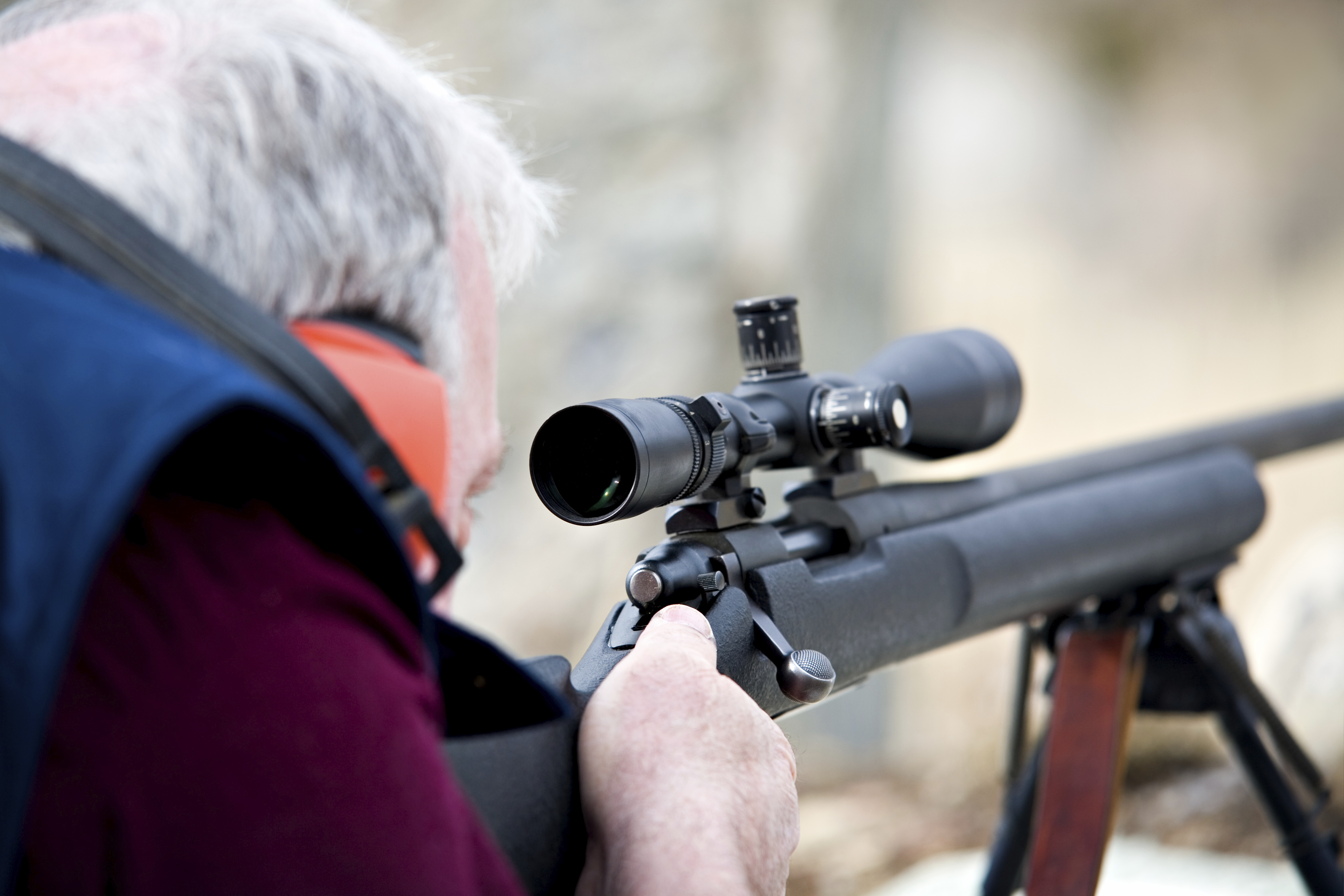
To shoot or not to shoot—that was the question. I was hunting pheasant at the Kiowa Creek shooting club east of Denver, using a new Zoli 28 gauge over/under shotgun. My dog charged a thicket of corn husks. A pheasant flew out like a missile. I shouldered the gun and established the lead, but as the bird gained distance, I concluded an ethical shot was not possible. I returned the gun to a safe position.
Ethical behavior is the foundation for safe, responsible hunting—indeed, for participating in any shooting sport. We want our students to be ethical participants in hunting and shooting sports; to be safe, not to hurt others, and to present themselves in a positive way. Here are five tips on how to effectively instruct students on hunting ethics.
“Good company and good conversation are the very sinews of virtue.” Izaak Walton, The Compleat Angler, 1653
1. Have a Dialogue
Every reader knows dozens of rules that promote ethical hunting: “Don’t shoot after dusk.” “Make sure the gun is unloaded when you cross a fence.” “Be sure of the backstop before you press the trigger.” “Always point the gun in a safe direction.” The rules are valuable and necessary, but stating a checklist of them is not the most effective way to teach. Students learn best when they are engaged and challenged.
Effectively teaching ethics, whether for hunting or another discipline, requires explaining why something is ethical or unethical rather than providing a list of rules to obey. Ask students why something is good and noses will wrinkle and brains will churn as if kneading dough as they craft an answer. When I asked that question, my young students often replied, “I’ve never thought of that before!”
Having a dialogue is the most effective way to impart information, activate the mind, stir the soul, and have students remember your words. The word ‘dialogue’ derives from the Greek dia and logos, meaning thoughts running through. A dialogue is a shared journey of analyzing issues and identifying values through creative questions to achieve understanding. A dialogue is the most effective way to teach ethics and ethical reasoning.
Questions guide a conversation and indicate what is important. Questions bring out the values and knowledge of the listener, of course, but they do more: they indicate respect. Few words honor a student more than asking, “What do...
you think?” The student will remember a positive feeling as much as your wise words.
Through dialogue, the instructor explores a subject in depth, and evokes an analysis deeper than what would develop by merely stating rules. Here is an example. Hunters and target shooters are told to pick up their empty hulls. The rule is based on an obvious reality: not picking them up litters and despoils the land. Therefore, the action is wrong.

A dialogue, however, will likely identify other reasons for picking up the hulls that stating the rule would not address, such as that the litter creates angry landowners who are then likely to prohibit hunting on their property. Through dialogue, as opposed to being given a rule, the student develops a deeper awareness of why something is right. Through discussion, the student is more likely to understand that ethics go beyond self, and that the door to ethical behavior swings outward, not inward.
2. Focus on the Facts
As the facts change, morality changes. An ethical shot at a pheasant with a 12 gauge gun may be unethical with a 28 gauge gun. A 300-yard shot at an elk may be ethical in the mid-day sun, but unethical at dusk. Handing a shotgun with the action open is more ethical than handing a shotgun with a closed action. You can think of many other examples.
Instructors want to teach information and reasoning. All judgments, particularly moral judgments, are fact specific. Moral reasoning is the process of identifying and then weighing facts in a moral context. Should a jury find the defendant guilty or not guilty? It depends on the facts. Thus, the key to instructing on ethical hunting is focusing on facts within an ethical framework.
Hunting, by its nature, involves killing an animal. There’s no avoiding that reality. Many variables can determine whether hunting is ethical, such as baiting animals, shooting from aircraft, driving animals into corners of penned fences, and so forth. In this essay, I address the ethical challenge to reduce the pain to the animal.
Ethical hunting, we come to understand, requires many skills such as excellence in marksmanship,...
knowledge of anatomy, awareness of wind and judging distances. We see the ethical hunter must be aware of many facts.
Facts are important because they lead to the truth, but truth is not an end in itself. Truth is just a springboard to moral action. Truth without moral behavior is morally worthless. Thus, the facts should be collected and interpreted within a moral framework, conclusions should be made based on those facts and actions should be taken based on those conclusions. Moral reasoning will dictate, for example, that a shot should not be taken if a deer is two hundred yards away, the wind substantial, the visibility low and the shooter’s skills beyond a hundred yards minimal.
3. Explain Why Something is ‘Good’
More than stating that a behavior is or is not ethical, the instructor should explain why an act is or is not ethical. To do that, to explain why acting ethically is worth doing, it is helpful for the instructor to draw upon the foundation of ethics and virtue, such as the ethical principles of Justice and Sanctity of Life. Several collections of ethical principles exist. Whichever principles the instructor selects, the instructor should explain how the morality of an action is justified by showing how the action is linked to, and advances, those ethical principles.
Here is an example that illustrates why a particular hunting behavior is ethical. Hunters have a moral duty to track a wounded animal and humanely kill it. The source or justification of this moral duty is the ethical principle Sanctity of Life, which holds that life is sacred, must be respected and treated with dignity. This principle also commands, for example, that people in danger should be rescued and that we should not abuse others. Child abuse violates the Sanctity of Life principle and is therefore unethical.

In the hunting context, Sanctity of Life means that hunting must be done in a way that honors the dignity of the animal and eliminates or reduces suffering. The skilled, disciplined hunter shows respect for the animal; the sloppy, undisciplined, or negligent hunter does not.
The...
principle Sanctity of Life requires that we show our hunting partners that our guns are unloaded when we transfer them.We can see how the principle also creates a moral duty to act in specific ways, such as sighting in our rifles and patterning out shotguns so that our equipment can advance ethical hunting.
Doing ‘good’ is good, an end in itself, because it advances virtue, respect, and human nobility. Ethics defines the quality of the relationship between you and others; between you and the object of the hunt. We don’t track the wounded animal because we are told to do so. We do so because it is unethical not to do it.
4. Explain that Doing Good is Not Easy
It is easier to be ethical on the first day of a hunt than on the last day of an unsuccessful hunt. Human nature tends to compel us to cut corners; to take the easy or expedient way. Ethical hunting requires not only mastery of the facts, but also self-discipline, self-control, and introspection. Suppose it is late afternoon on the last day of an unsuccessful elk hunt; you’re tired, you want success, and an elk walks into a meadow. You can make a shot, but it has low percentage for an ethical kill. The only forces restraining you from taking the shot are your sense of honor and self-control.

Doing good, doing what is right, is not easy. Anyone who teaches a child that moral behavior is easy weakens that child. Such a belief will subvert the development of the grit, the tenacity and the moral courage necessary to do what is right. Moral action often requires strength of character to stand against the crowd. Being ethical is often lonely. Being a person of moral judgment requires thinking with moral clarity, and having the character and courage to do what you know is correct.
5. Link Actions to Personal Character and Virtue
It is a shallow and dismal life to take the easy or unethical way. Instructors should inspire students toward virtuous behavior, and one of the best ways to do that is to demonstrate the relationship between specific actions and larger ethical themes, such as personal honor, self-respect and moral...
integrity.
Show your students how actions illuminate their moral character. Link an action—not taking the shot; picking up the empty hulls—to character and honor. Show how virtuous behavior leads to developing a moral conscience and to that unique joy derived from self-worth and self-respect. The unethical hunter may not only wound a deer. The unethical hunter wounds himself.
The instructor or parent should have a dialogue about the entire hunting experience; the sunsets as well as the harvested animal. Mark Cousins, Hunter Education Coordinator, Colorado Division of Wildlife, wrote, “This is what I think is often lost in today’s instant society. Everything is hurried, and not enough time is taken to enjoy all the aspects of the hunting trip.”
A dimension of that time for enjoyment includes talking about the ethics of the hunt. Don’t worry if you think you cannot cover every ethical aspect. Do not be deterred even if you think your verbal skills lie somewhere between the Rain Man and a silent movie. The students want you to help them become stronger people. They want to know right from wrong. The lessons you teach about ethical hunting will permeate like quicksilver into all facets of their lives. It all begins with a dialogue and simply asking, “What do you think?”
Michael Sabbeth is a lawyer and author in Denver, Colorado. He writes for many hunting and shooting publications and lectures widely on hunting and shooting ethics and communication skills. He lectures on ethics and rhetoric to law associations and civic and business groups. He is the author of The Good, The Bad &The Difference: How to Talk with Children About Values, available on Amazon.com: http://tinyurl.com/c5flmmu Please visit his website at www.kidsethicsbook.com. He is currently writing a book on persuasive teaching skills for hunting and the shooting sports titled The Honorable Hunter: Defending and Advancing Our Hunting Heritage. His website, www.TheHonorableHunter.com is presently under construction.